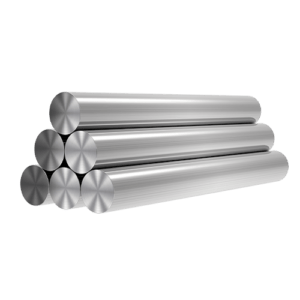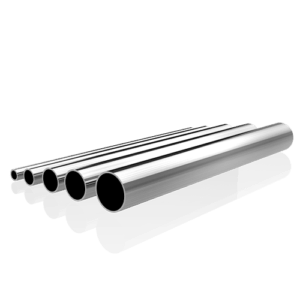Welcome to My Blog!
Before we dive into the content, I’d love for you to join me on my social media platforms where I share more insights, engage with the community, and post updates. Here’s how you can connect with me:
Facebook:https://www.facebook.com/profile.php?id=100090063158454
Now, let’s get started on our journey together. I hope you find the content here insightful, engaging, and valuable.
Introduction

Choosing the right material for your project is crucial, especially when deciding between stainless steel vs carbon steel. Each type of steel has distinct properties that can affect durability, cost, and application. This blog will delve into the advantages and disadvantages of both materials, offering insights to help you make an informed decision.
Understanding Stainless Steel and Carbon Steel
What is Stainless Steel?
Stainless steel vs carbon steel starts with understanding their compositions. Stainless steel is primarily made of iron, chromium (at least 10.5%), and other elements like nickel. The chromium content is what gives stainless steel its renowned corrosion resistance. This makes it ideal for environments exposed to moisture and chemicals.
What is Carbon Steel?
In contrast, carbon steel is an alloy consisting mainly of iron and carbon. The carbon content varies from 0.05% to 2.0%, influencing the steel’s hardness and strength. Unlike stainless steel, carbon steel is more prone to rust and corrosion, which can limit its applications.
Key Properties of Stainless Steel and Carbon Steel
| Property | Stainless Steel | Carbon Steel |
|---|---|---|
| Corrosion Resistance | High | Low |
| Strength | Moderate to High | High |
| Ductility | Good | Moderate |
| Cost | Generally Higher | Generally Lower |
| Maintenance | Low | High |
| Weldability | Generally Good | Can be challenging |
| Applications | Kitchenware, medical equipment | Structural beams, automotive parts |
Pros and Cons of Stainless Steel
Advantages of Stainless Steel
- Corrosion Resistance: The high chromium content in stainless steel provides excellent resistance to rust and corrosion, making it suitable for various applications, especially in moist environments.
- Aesthetic Appeal: Stainless steel is known for its shiny, attractive finish, which is often preferred in architectural designs and kitchenware.
- Durability: Stainless steel is incredibly strong and durable, offering longevity and resistance to wear and tear.
- Low Maintenance: Because of its resistance to staining and rusting, stainless steel requires less maintenance compared to other materials.
Disadvantages of Stainless Steel
- Cost: One of the most significant drawbacks of stainless steel is its higher cost compared to carbon steel. This may be a concern for budget-sensitive projects.
- Welding Challenges: While stainless steel can be welded, it requires specific techniques and equipment to avoid compromising its properties during the process.
- Thermal Conductivity: Stainless steel has lower thermal conductivity than carbon steel, which can be a disadvantage in applications like cookware.
Pros and Cons of Carbon Steel
Advantages of Carbon Steel
- Cost-Effective: Carbon steel is typically less expensive than stainless steel, making it a popular choice for various applications.
- High Strength: Carbon steel is known for its high tensile strength, making it ideal for structural applications where strength is essential.
- Easy to Machine: Carbon steel is easier to machine and shape, making it suitable for diverse manufacturing processes.
Disadvantages of Carbon Steel
- Corrosion Susceptibility: A major drawback of carbon steel is its susceptibility to rust and corrosion, especially in moist environments. This limits its applications significantly.
- Maintenance Requirements: Carbon steel requires more frequent maintenance to prevent rust and deterioration, potentially increasing long-term costs.
- Lower Ductility: Compared to stainless steel, carbon steel has lower ductility, which makes it less suitable for applications requiring bending or stretching.
Application Areas for Stainless Steel and Carbon Steel
Common Uses of Stainless Steel
- Kitchenware: Cookware, cutlery, and appliances are often made from stainless steel due to its corrosion resistance and aesthetic appeal.
- Medical Equipment: Stainless steel is commonly used for surgical instruments and sterilization trays.
- Architecture: Stainless steel is used in handrails, structural supports, and building facades.
- Food Processing: Equipment that requires high hygiene standards often utilizes stainless steel for its cleanliness.
Common Uses of Carbon Steel
- Construction: Carbon steel is widely used in structural beams and reinforcements for buildings.
- Automotive: It is commonly used for engine components, frames, and body panels due to its strength.
- Manufacturing: Carbon steel is often employed in tools, dies, and machinery parts.
- Pipelines: Carbon steel is the preferred choice for transporting oil, gas, and water.
Maintenance and Care
Maintaining Stainless Steel
To keep stainless steel in optimal condition:
- Regular Cleaning: Use mild detergents and avoid abrasive cleaners that can scratch the surface.
- Avoid Chlorine: Exposure to chlorine can cause pitting; always rinse after using bleach or cleaning agents with chlorine.
- Drying: Always dry stainless steel surfaces after cleaning to prevent water spots.
Maintaining Carbon Steel
Proper maintenance for carbon steel includes:
- Protective Coating: Applying oil or paint can help prevent rust formation and maintain its integrity.
- Regular Inspections: Check for signs of rust or corrosion and address them promptly.
- Proper Storage: Store carbon steel tools and equipment in a dry environment to minimize exposure to moisture.
Environmental Impact

Stainless Steel and Sustainability
One significant advantage of stainless steel is its recyclability. It can be recycled multiple times with minimal loss of quality. The recycling process also requires less energy compared to producing new stainless steel from raw materials, making it a sustainable choice.
Carbon Steel and Environmental Considerations
Carbon steel is also recyclable, but its production process can be more energy-intensive. Additionally, the need for protective coatings can raise environmental concerns if not managed properly. Despite this, its widespread use in construction and manufacturing contributes to overall sustainability when effectively recycled.
Conclusion
In the ongoing debate of stainless steel vs carbon steel, the best choice depends on your specific requirements. Stainless steel excels in corrosion resistance and aesthetics, making it ideal for kitchenware and medical applications. On the other hand, carbon steel offers high strength and cost-effectiveness, making it suitable for construction and manufacturing.
Understanding the pros and cons of stainless steel vs carbon steel is crucial for making informed decisions that align with your project’s needs and budget. By considering factors such as maintenance, environmental impact, and application areas, you can select the right type of steel for your next project.
FAQ
Which is stronger: stainless steel or carbon steel?
Carbon steel generally has a higher tensile strength compared to stainless steel, making it suitable for applications where strength is critical.
Is stainless steel worth the extra cost?
Yes, if your application requires corrosion resistance and lower maintenance, the benefits of stainless steel can outweigh its higher cost.
Can stainless steel rust?
While stainless steel is resistant to rust, it can still corrode under certain conditions, such as exposure to chlorides or prolonged moisture.
How do I choose between stainless steel and carbon steel for my project?
Consider the specific requirements of your project, including exposure to moisture, budget constraints, and the need for strength or corrosion resistance.
What types of stainless steel are available?
Stainless steel comes in various grades, such as 304 and 316, each with different properties suited for specific applications.
